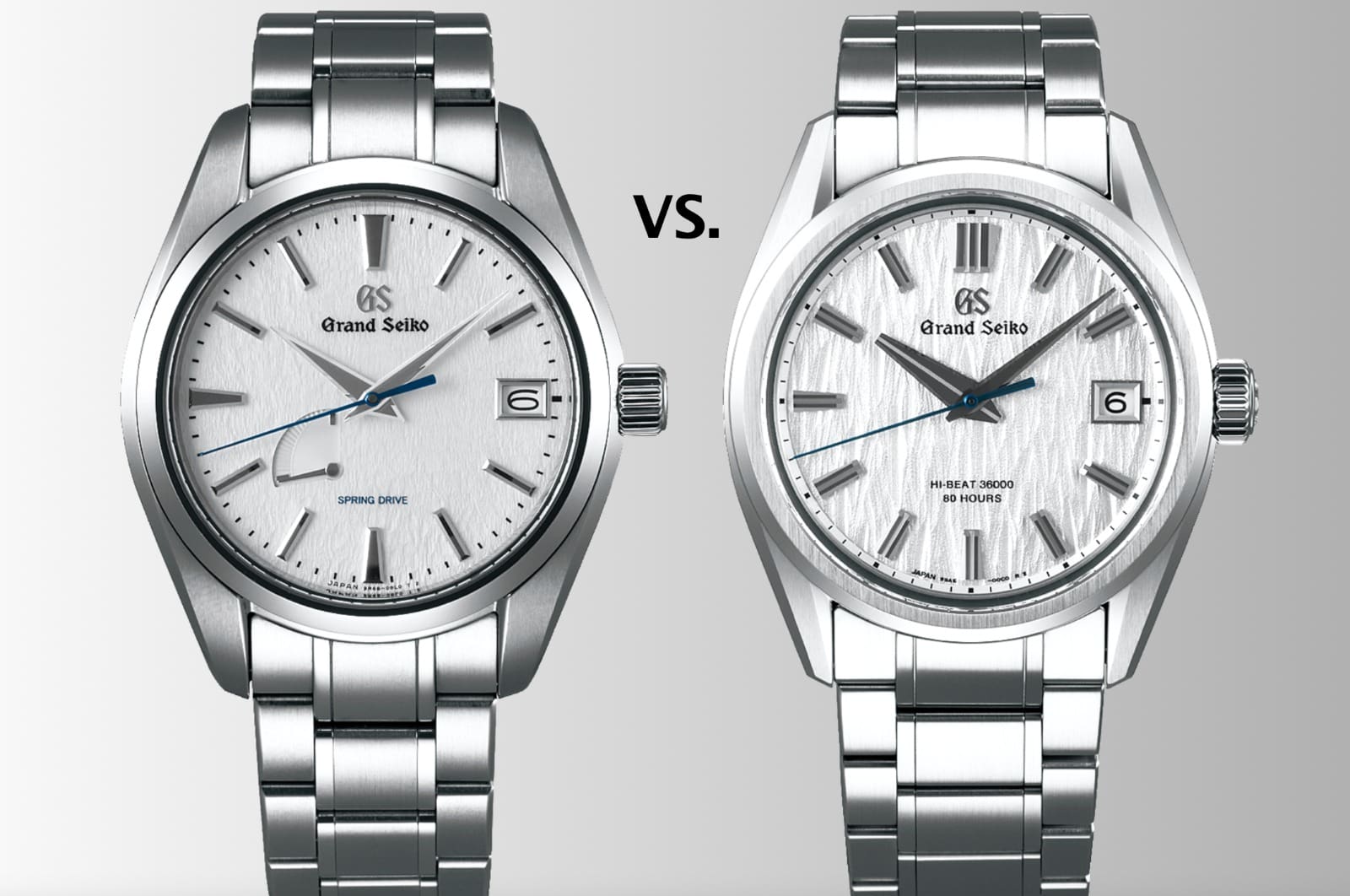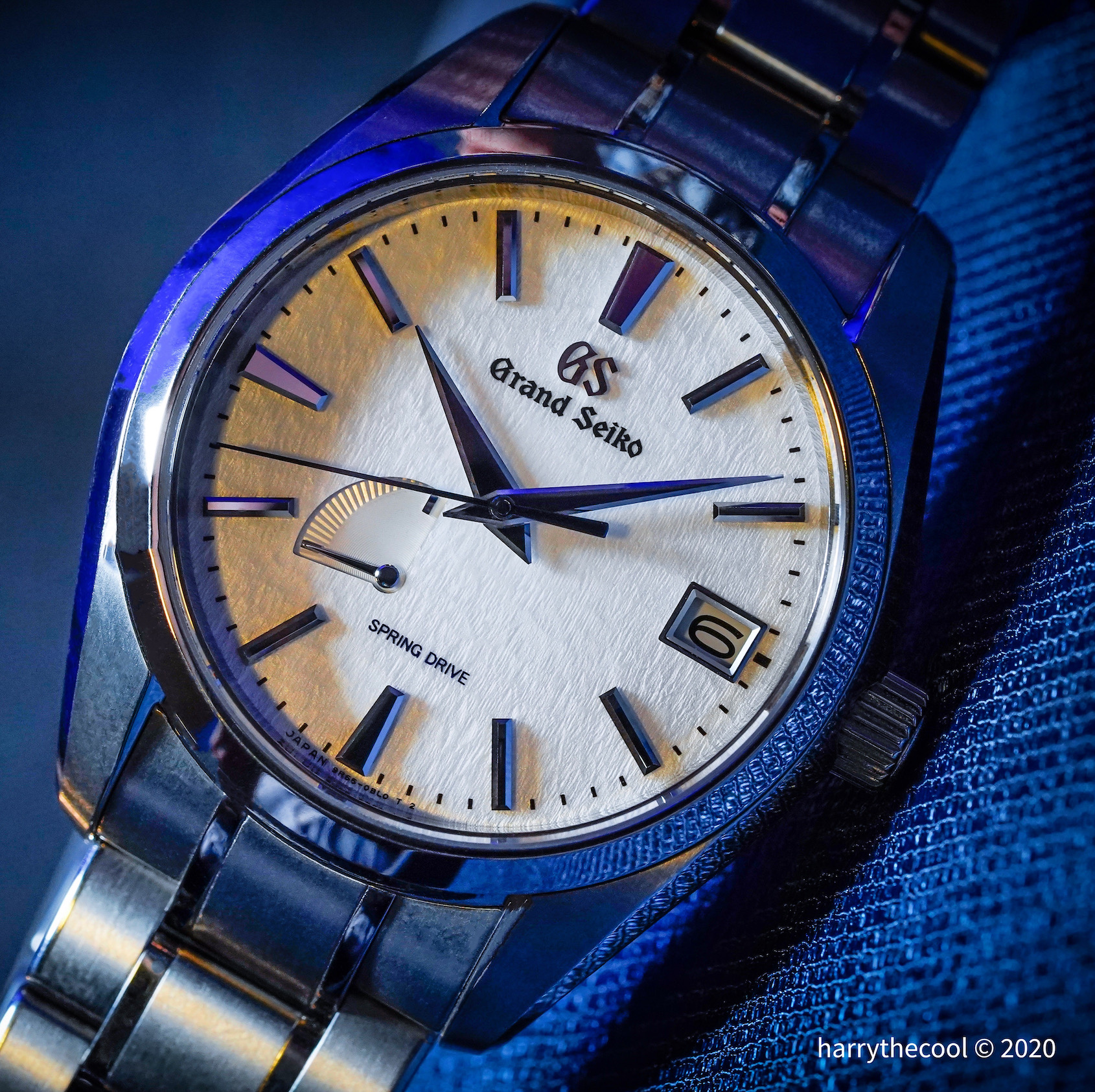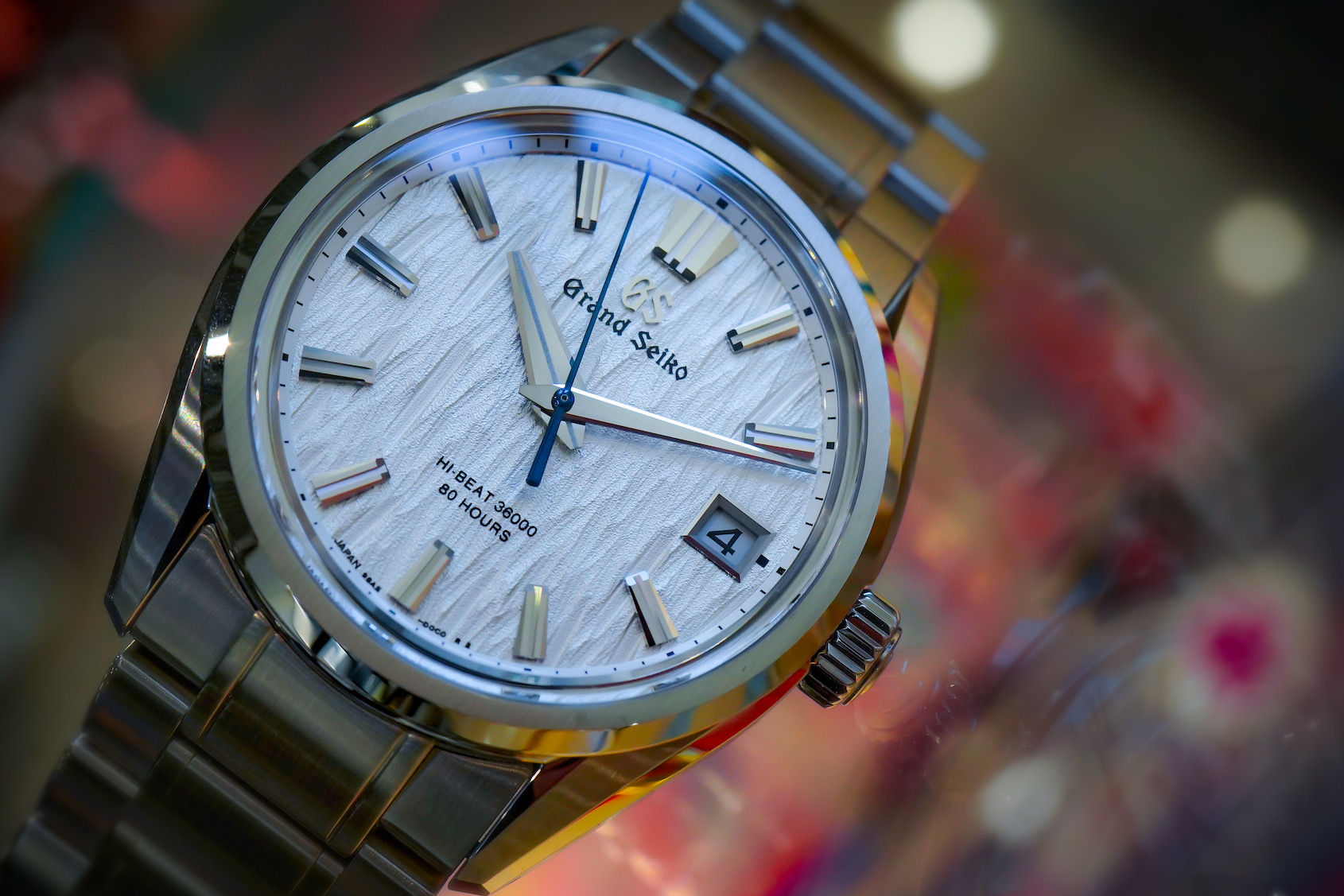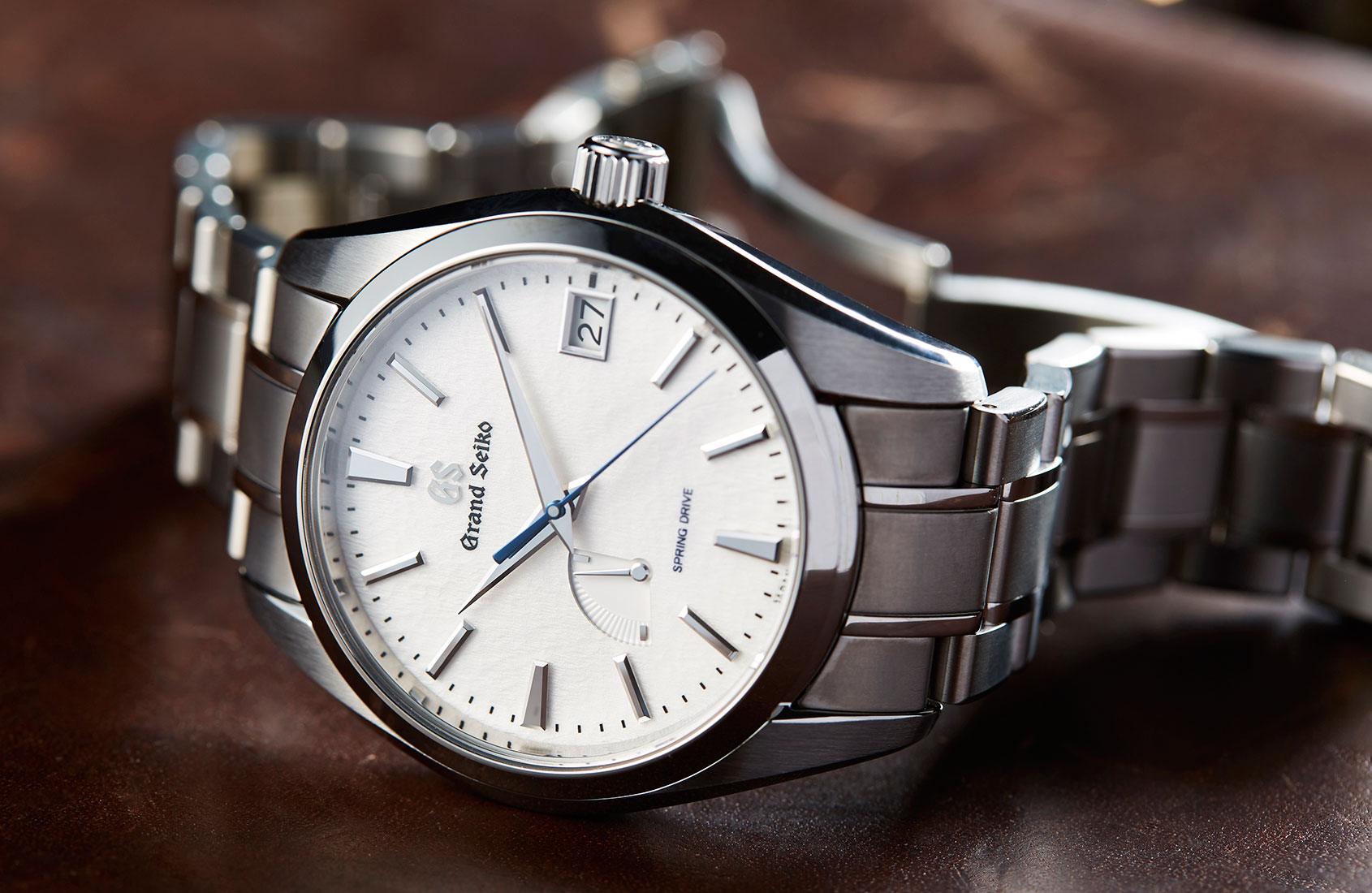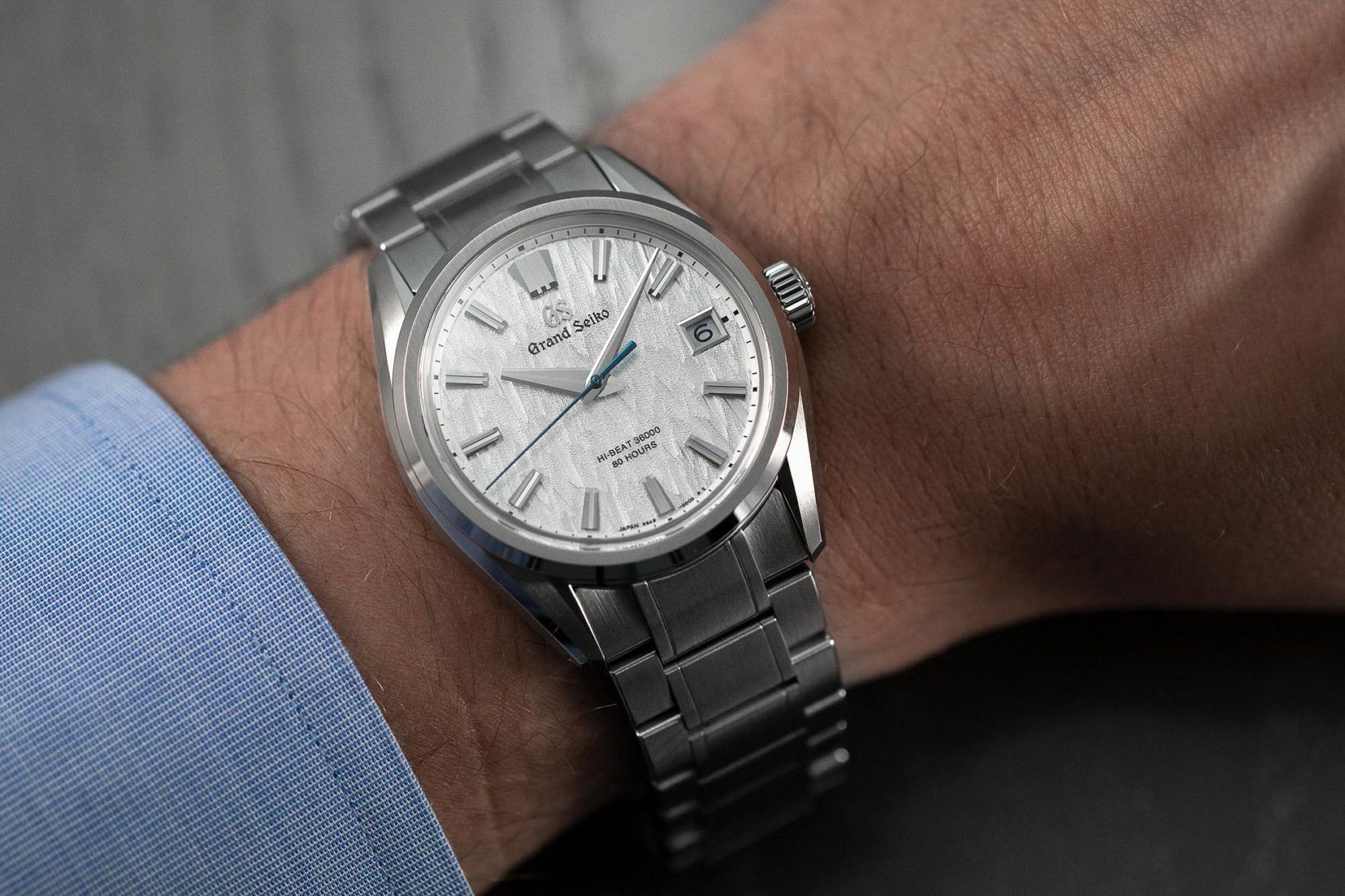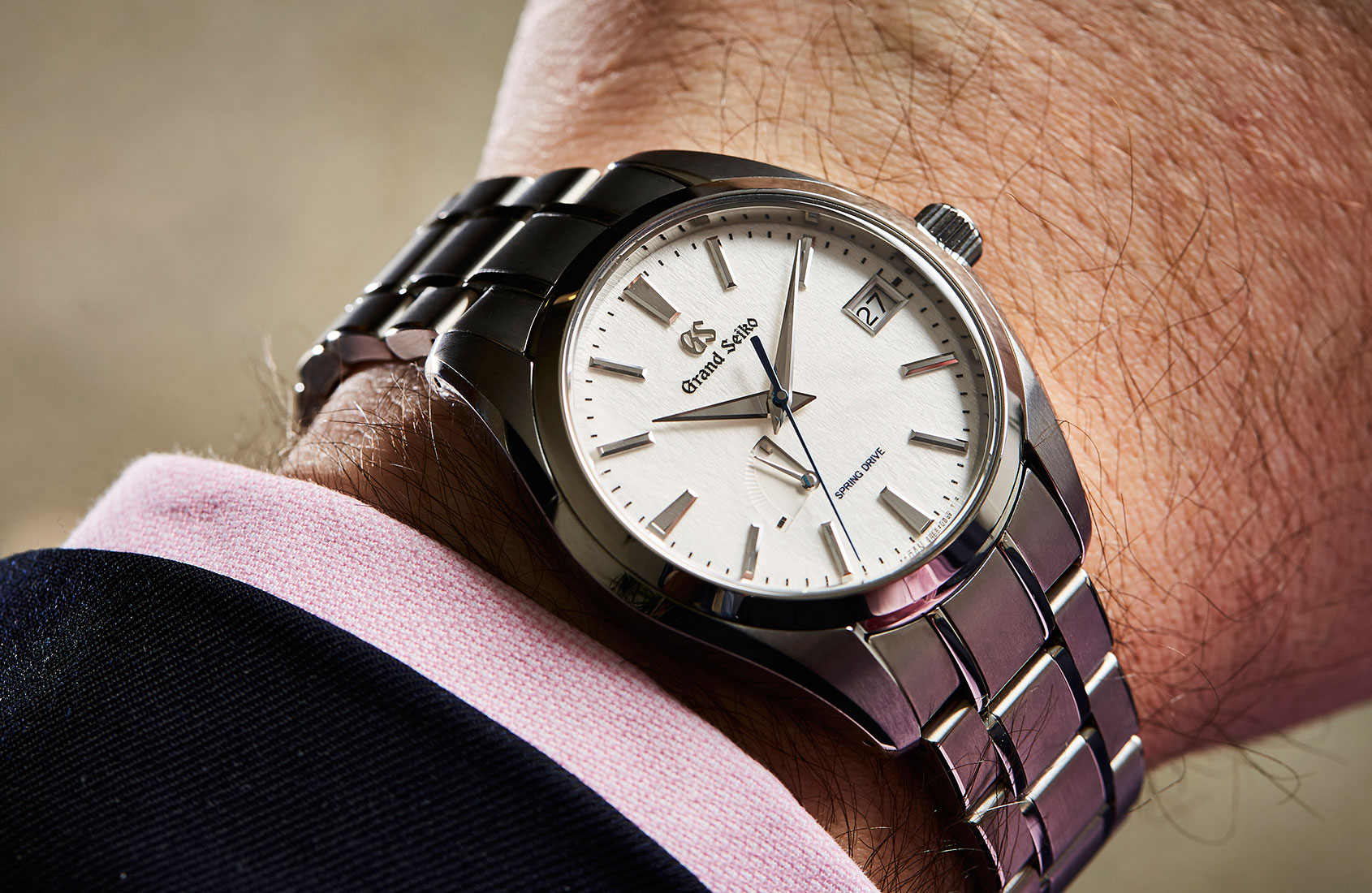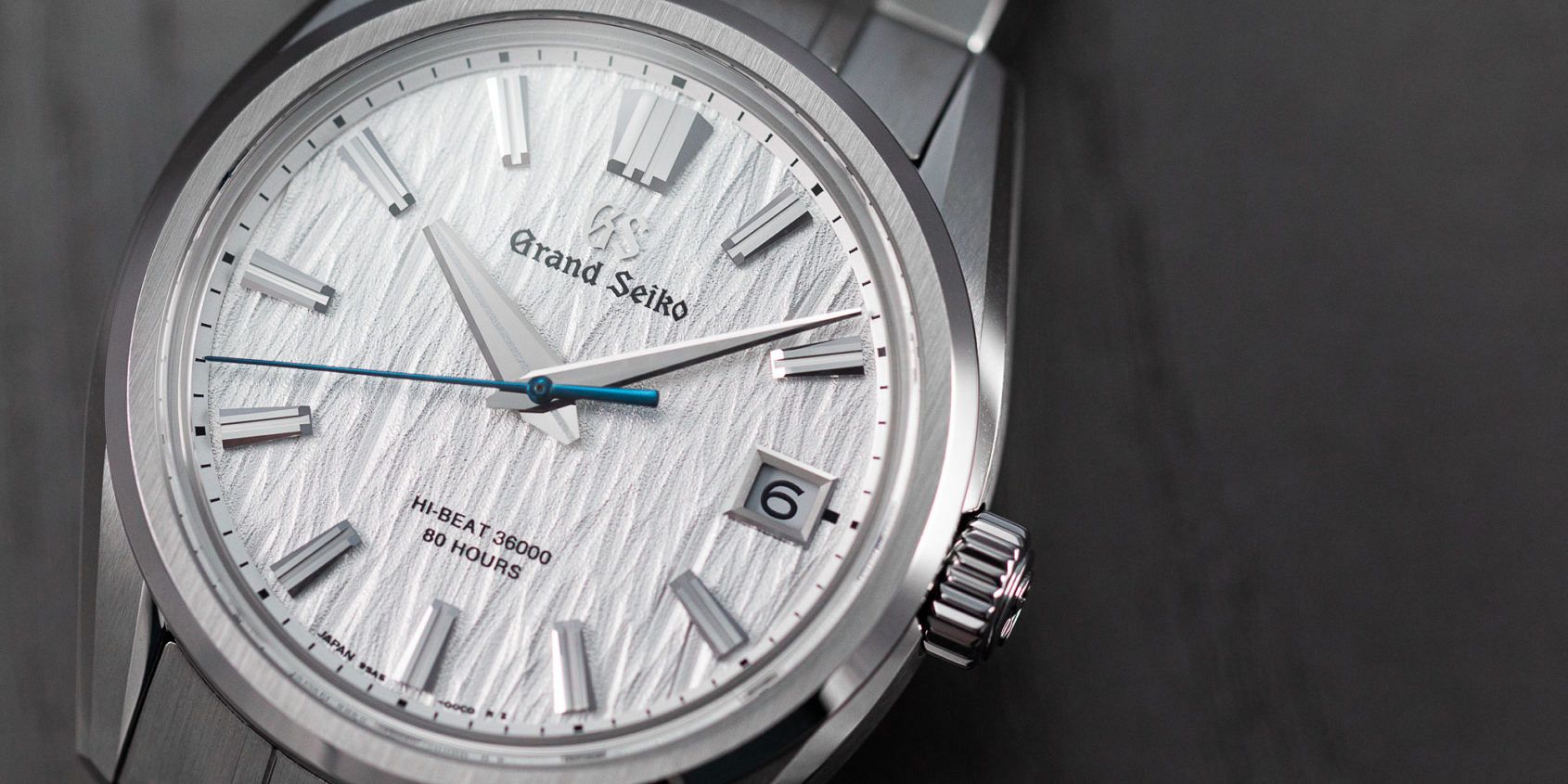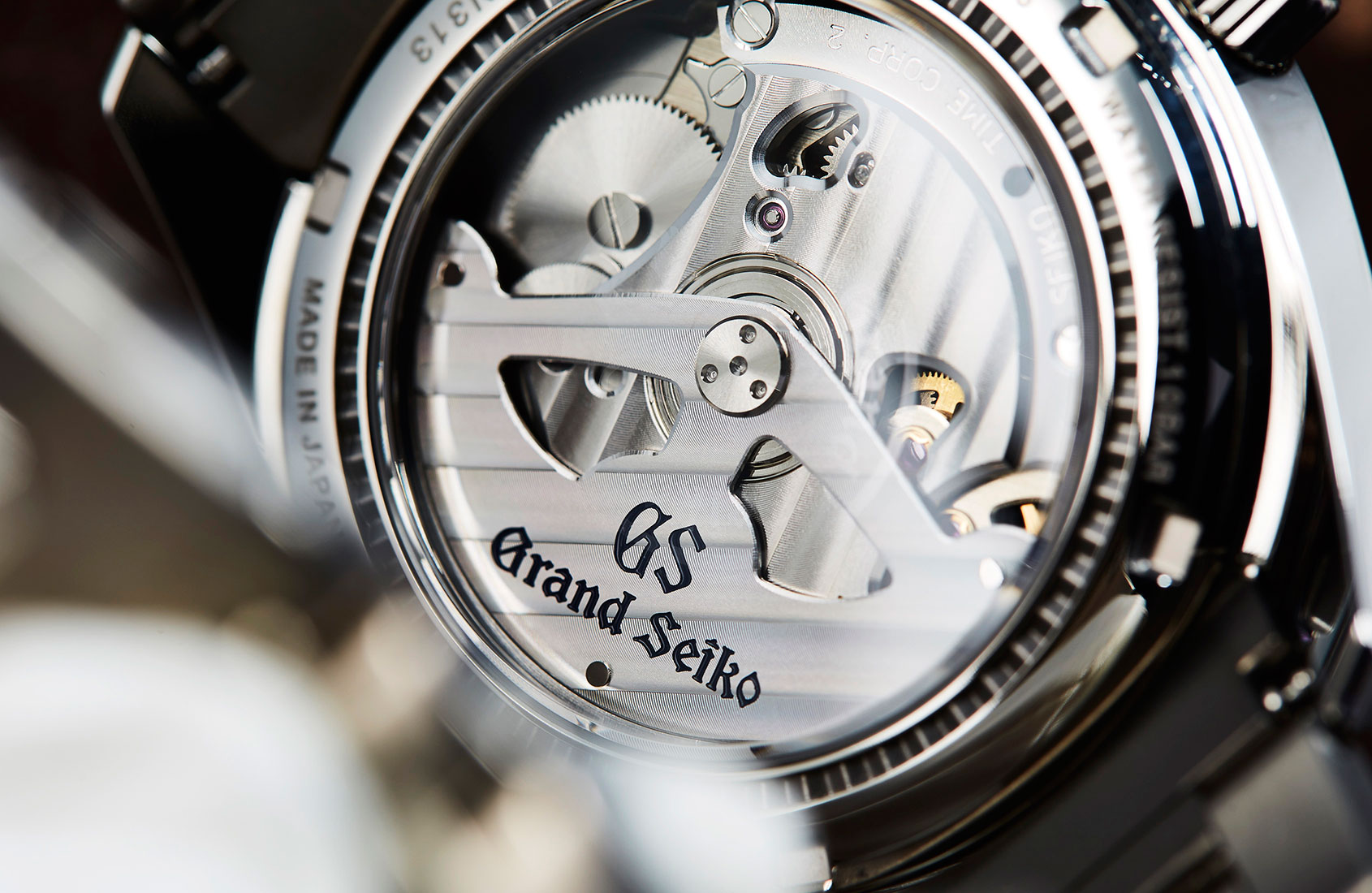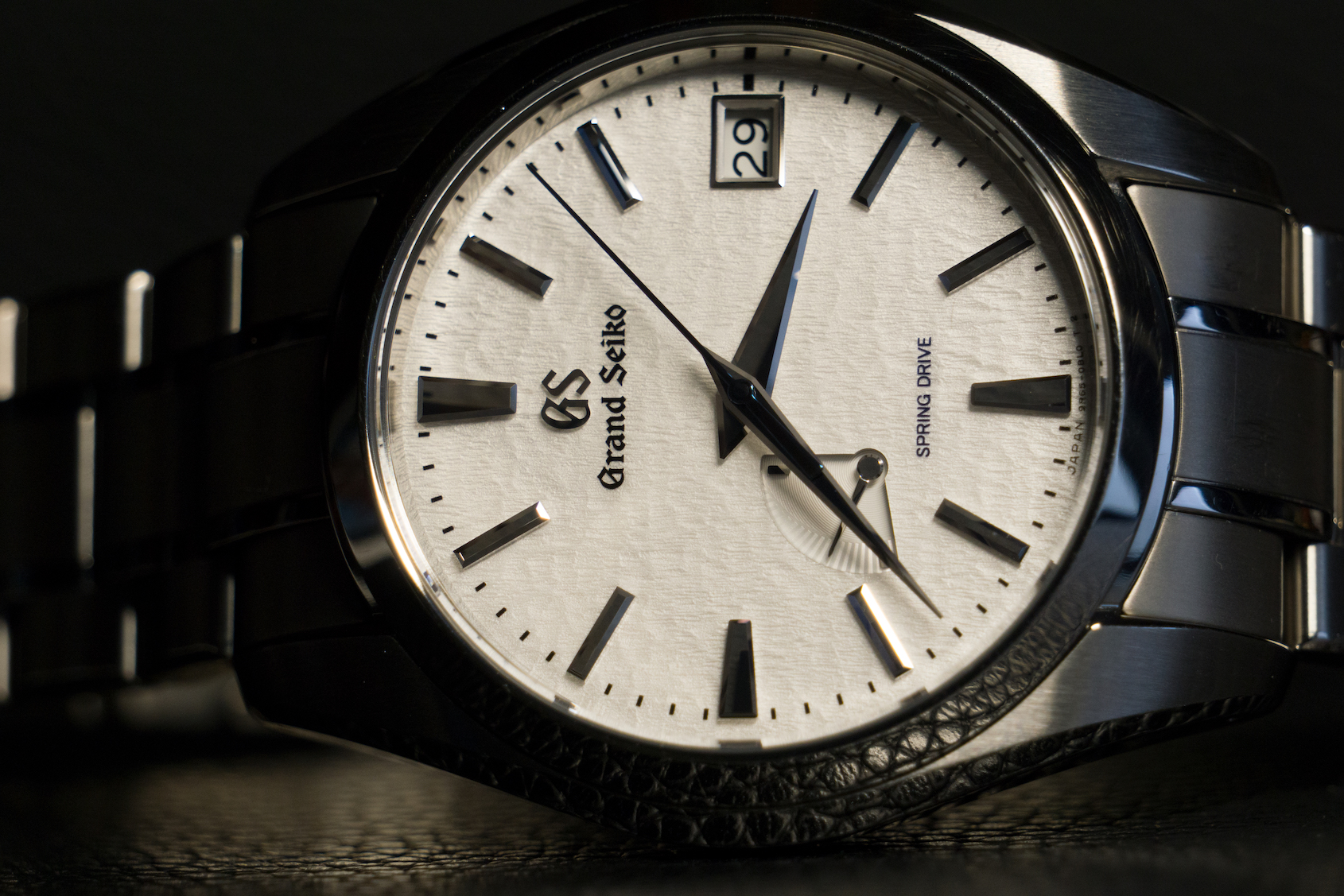Grand Seiko Snowflake versus White Birch: the battle between the classic and contender
Zach BlassGrand Seiko has been around for over 60 years, but within the last decade the brand is slowly (yet exponentially) growing its presence throughout the watch community and the world. The brand is known by enthusiasts for their high-value craftsmanship, offering more black polished components than most Swiss brands – and at a fraction of the price. Their Zaratsu finishing method results in some of the most aesthetically pleasing cases and their nature-inspired dials immediately catch the eye. This year, the new 9SA5 powered SLGH005 White Birch has taken the watch world by storm, its textured white dial and dual impulse movement leading some to believe it will overthrow the renowned SBGA211 Snowflake as the iconic white-dialled design of the catalogue. With the debate hot and raging, I’ve decided to throw my hat into the ring: Snowflake versus White Birch, the battle between the classic and the contender.
To be clear, both are excellent watches neither of which you could go wrong with in your collection. So my breakdown will be a bit nit-picky, as well as subjective to my tastes and perspective.
The dials
While both watches have white dials, their textures and tones vary quite a bit – which in turn changes how they wear. The Snowflake dial texture is much more micro in scale, meaning the pattern is less pronounced and from a distance will not be observable to the eye. You have to be intimate with the watch to understand the nature-inspired dial. To be frank, my friends who have not immersed themselves in watches do not immediately pick up the fact the dial is inspired by a snow-covered mountain top – they typically respond to my explanation with “Huh, to me it looks like the texture of paper”. The White Birch, on the other hand (or wrist), has a much more pronounced texture. The pattern is more macro, by which I mean the engraving utilises fewer but larger lines with greater depth – the carved texture much more visible. It should also be noted that the deeper White Birch texture and the shadowing that results from it, creates a silverish hue to the white – the Snowflake a much crisper and brighter white to the eye.
I bother to point this out because it shapes my belief that, while both watches are very robust, the Snowflake has a greater elegance to its aesthetic while the White Birch is much more sporty. The broad hour hand of the Series 9 design is intentionally sporty, whereas the more matching handset of Snowflake is more traditional and elegant. Sure, both can be worn in formal and functional settings, but on the spectrum between the two I would place the Snowflake closer to formal and the White Birch closer to functional. Again, both are robust pieces. But if I had both in my collection, I would be more inclined to wear the Snowflake with a suit/formal wear. In terms of causal daily wear, It would be a relatively even split between the two – so perhaps that is a victory for the Snowflake in this category (being, in my opinon, more capable of pairing with a range of outfits).
The cases
In terms of stance on the wrist, the watches are pretty much even with the White Birch 1mm smaller in diameter and lug-to-lug (41mm vs. 40mm and 48mm vs. 47mm). The most dramatic difference, aside from case geometry which I will touch upon shortly, is the thickness. While less than a millimetre separates the thickness of the two, the fact the White Birch is 11.7mm thick versus the 12.5mm thickness of the Snowflake has not gone unnoticed. Grand Seiko has had pushback from some collectors who claim their timepieces are on the thicker side but, truth be told, the manner in which they sit on the wrist means they will wear thinner than their dimensions. Nevertheless, in a battle of thinness, the winner is the White Birch.
In terms of geometry I would say that the unnumbered case design of the SBGA211 Snowflake is more rounded and smooth whereas the SLGH005 White Birch Series 9 case has sharper lines and facets. The Series 9 case design utilises the most play with “light” and “shadow” according to the brand, with more alternating finishes to its facets and surfaces than ever before. An example of this is the Series 9 bezel which uses a flat brushed inner ring that breaks to a sloped distortion free outer ring on the bezel. This is the first time both brushed and polished elements have been presented on a bezel – it’s design evoking the sportier yet elegant finishing of say a Royal Oak or Nautilus.
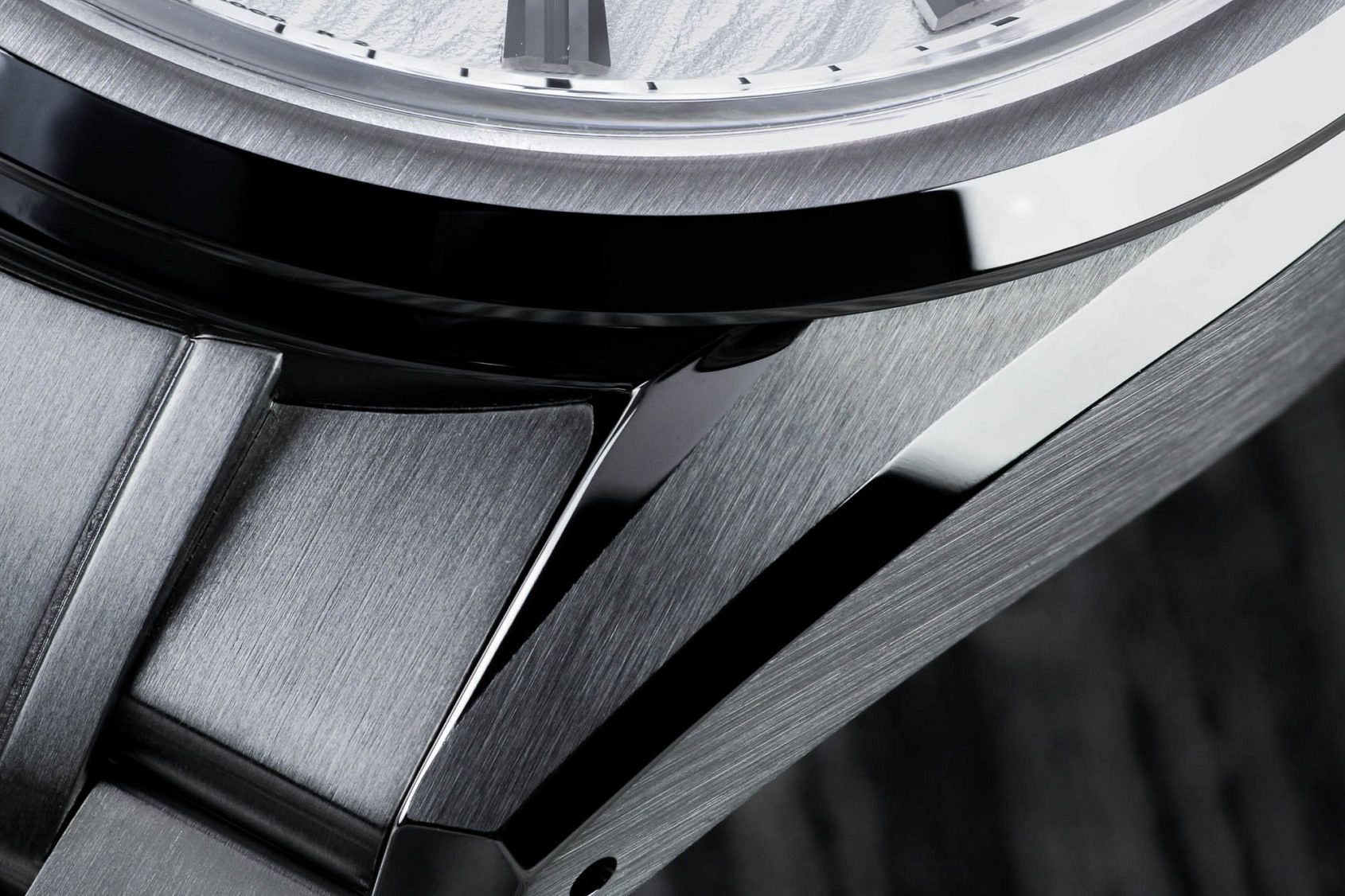
Both cases are certainly elegant, with the Series 9 intentionally more sporty in design. The more curved profile of the Snowflake is another reason why I earlier proclaimed the SBGA211 as the better option for formal wear. Therefore from a case aesthetic point of view, I think it ultimately depends on your own personal tastes, preferences, and lifestyle. While I won’t declare a winner in this aspect, I do have to respect the multi-faceted design of the Series 9 case.
The bracelets
The bracelets are largely the same, with a few minor differences that are major to watch enthusiasts. The lug width is wider on the White Birch than the Snowflake, with the SLGH005 coming in at 22mm and the SBGA211 at 20mm. Both have white dials ripe for a range of coloured straps, and fortunately 20mm and 22mm are among the easier widths/sizes to find aftermarket straps for.
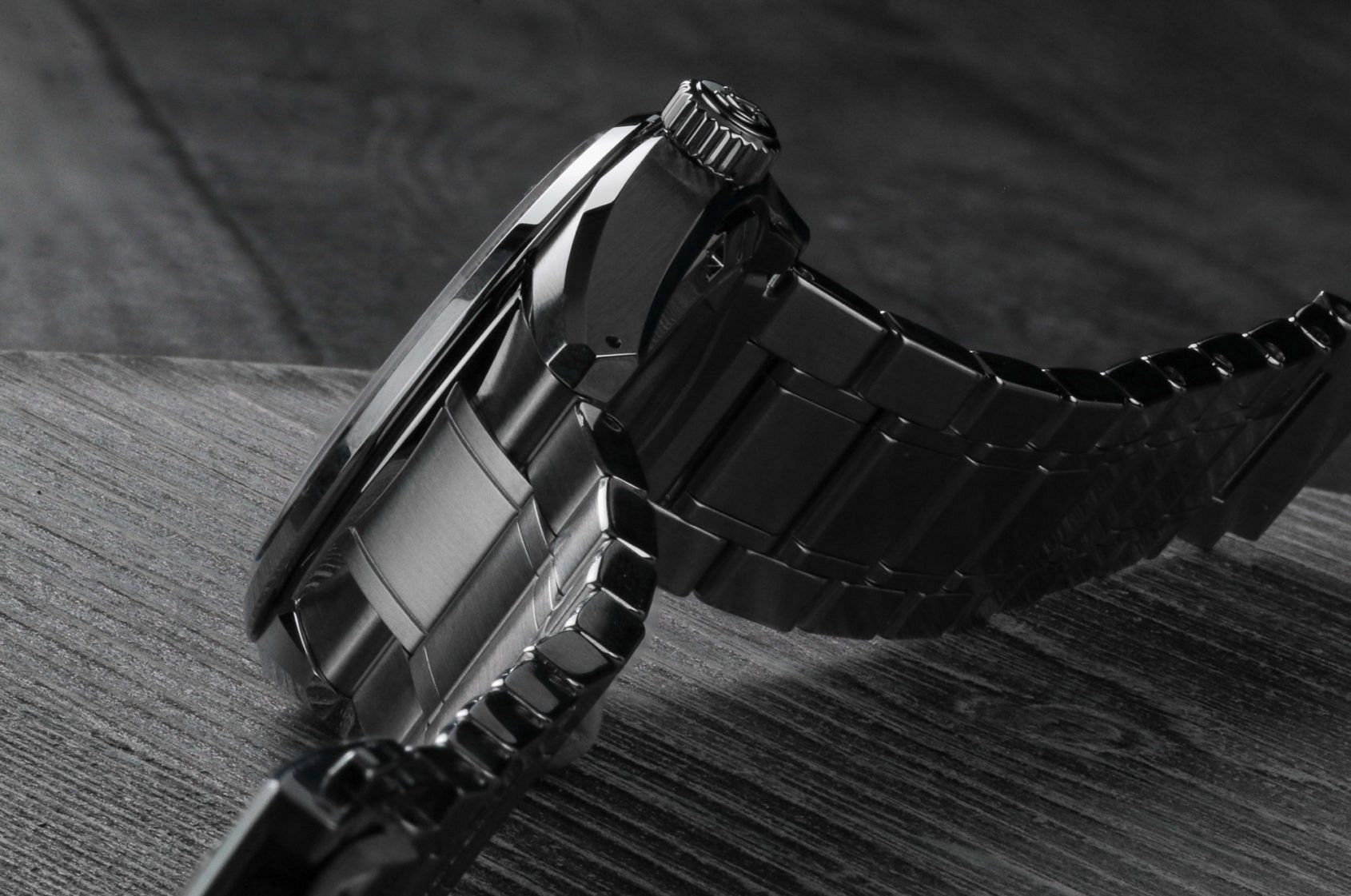
Assuming, like me, you would keep either on their bracelet, both bracelets utilise the same design framework. They each have five-piece links comprised of three broader components with two narrower components framing the centre link. The main aesthetic difference, aside from the 22mm vs 20mm lug width, is that the SLGH005 White Birch bracelet has only polished shoulder bevels to the outer link whereas the SBGA211 has the shoulder bevelling as well as polishing on the two narrow pieces that frame the central link. The alternating polish on the Snowflake bracelet again caters to my perspective that its a more elegant aesthetic, while the full satin of the White Birch ties the watch into its sportier design. So, all in all, there is no victor (per say) in terms of the bracelet as they are largely the same – the only constructional advantage would be that the steel bracelet of the SLGH005 has screws while the titanium SBGA211 has a pin and collar system.
Titanium versus Stainless Steel
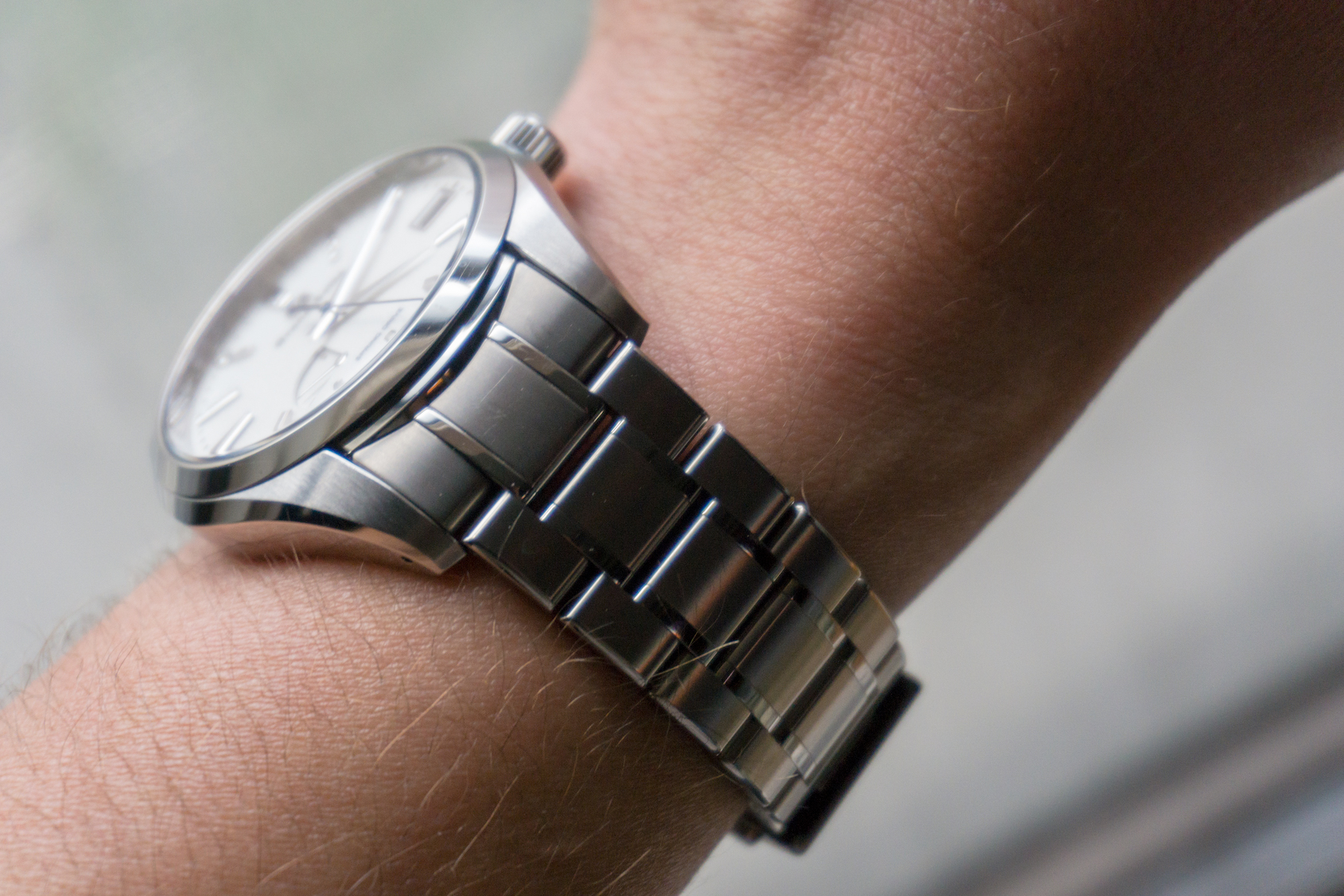
The materials of these two watches differ in that the Snowflake is titanium while the White Birch is steel. Both titanium and steel are very robust materials – arguably the two best for daily wear. In terms of appearance, they largely look the same with only a trained eye really able to discern a different hue. Grand Seiko’s titanium is highly scratch-resistant, supposedly 40% more resistant than stainless steel, but both will show signs of being worn over time. My personal experience with two Grand Seiko watches in titanium (the SBGA211 and SBGA413) is that they really do not scratch easily, but they will accrue hairline scratches over daily wear. That being said the scratches are not deep, no chipping or denting whatsoever. So the truth is, unless holding the watch close, the watch will always look relatively pristine through casual daily wear.
The key component to consider when pitting these two materials against each other is the weight. This is, again, a matter of perspective. Some believe the lightweight nature of titanium does not have a luxurious feel on the wrist. For those who associate luxury with heft, and believe titanium feels “light and cheap”, then the White Birch will probably appeal to you more. Personally I find the featherweight experience of Grand Seiko on the wrist to be a huge benefit. I enjoy how it feels on the wrist, and during a busy and active day it is nice not to feel like you have a paperweight strapped to your wrist. When you better understand the material, the heft: luxury ratio begins to dissipate. I like the heft of my Rolex Submariner in 904L steel, don’t get me wrong. But, over the course of a day it can be a bit much for the wrist – especially if you’re doing something very active.
A clear benefit of Grand Seiko in steel is having a bracelet with screws versus pin and collar. While I have never had an issue with the pin and collar system, screws are a much more luxurious solution and typically a lot easier to handle when it comes to self-sizing a bracelet at home.
The movements
What’s incredible about these two movements is that they each represent some of the most ingenious developments in movement technology. Spring Drive, after decades of development, was released in 1999 and completely revolutionised what one could expect from a (predominantly) mechanical movement. Traditionalists say they are irked by the replacement of a conventional escapement with a quartz-regulated alternative. While I can understand the point of view, I have never thought of Spring Drive as a quartz movement – and as we are all slowly beginning to realise regardless: quality quartz is nothing to scoff at. The 9R65 Spring Drive caliber in my Snowflake is the most reliable timekeeper in my arsenal. My Snowflake has never lost time, it’s deviation each day consistently within +0-.5 seconds. As someone who tries to keep their watches regularly synced to his Watchville app, it’s nice knowing that when I pick up my Snowflake to top off the power reserve I rarely have to resynch the watch (unless I don’t wear the watch for three days due to its 72 hour power reserve). The 9R65 is also aesthetically pleasing to the eye, when you line up the Tokyo stripes of the rotor with the stripes on the bridges you actually see a picture of the mountain neighboring the studio where the movements are made.
The 9SA5 is also another monumental development for the brand. The highly developed caliber, with a dual impulse escapement, rivals the Co-Axial technology brought forth by legendary watchmaker George Daniels. The 9SA5 is 15% thinner than their previous hi-beat caliber, thanks to the horizontal layout of the twin barrels and gear train. This is also why the White Birch was able to shave off almost a millimetre in case thickness in comparison to the Snowflake. The twin barrel movement has 80 hours of power reserve, a hi-beat frequency of 36,000 vph, a new free-sprung balance, and new Grand Seiko overcoil hairspring distinct to the brand and perfected through over 80,000 simulations. The 9SA5, being a 9 Series movement, boasts not only peak technical innovations but also reaches a new tier of aesthetic finishing. The movement layout and finishing is inspired by the rippling waves of the Shizukuishi River near the studio where the watch is made – yet another example of Grand Seiko tying its design language to nature. The bridges have diamond-polished bevels and a greater degree of hand intervention in its finish than calibers like the 9R65. The skeltonised rotor also allows a much better view of the full movement, something the wearer will really appreciate as the movement is quite stunning.
So, in terms of aesthetics and purely mechanical innovation – the 9SA5 is the clear winner over the 9R65. The only area where the 9R65 Spring Drive in the Snowflake truly tops the 9SA5 is its accuracy. The 9SA5 is regulated to run within +5/-3 seconds per day. So while it runs with chronometer standards, no movement will be able to maintain the same level of accuracy as Spring Drive.
Snowflake versus White Birch: The Final Verdict…
The short answer: you can’t go wrong with either. They are both truly stunning watches, each with their merits. The Snowflake is $5,800 USD, while the White Birch is $9,100 USD, so there is definitely a financial consideration when choosing between the two. If you can swing it, the White Birch really represents the pinnacle of Grand Seiko’s standard offerings and it’s aesthetic and mechanical appeal is undeniable. The 9SA5 really is gorgeous to see in the metal, and does not have the asterisk of quartz regulation for mechanical purists. That being said, the Snowflake has the appeal of being lightweight and low hassle. Spring Drive is a smooth and trouble-free wearing experience, as fluid as its blued central seconds hand. In terms of which now reigns king within the catalogue, Snowflake versus White Birch, I would have to say the White Birch.
But is it the new flagship icon of the brand? In my opinion, no. The watch needs a few more years before it can take the icon crown away from the Snowflake, and I think the Snowflake remains the more approachable reference both in price and aesthetic. To an extent, while similar in approach, these two are not really apples to apples when you dig deeper. They represent two different tiers of design and price within the catalogue, the SLGH005 really the first foray into a higher standard production price tier. It is yet to be proven. I have every faith that it will be incredibly successful, and we are already seeing how much the White Birch is resonating with buyers worldwide. But I also think it is just the beginning, and I am personally eager to see what other dial designs are eventually paired with the 9 Series case and 9SA5 movement.




